We use cookies to improve your browsing experience on our site, show personalized content and analyze site traffic. By choosing "I Accept", you consent to our use of cookies and other tracking technologies.



Zengo was commissioned to develop an array of VR games to be implemented within the framework of the PETŐFI 200 program series, celebrating the renowned Hungarian poet, Petőfi Sándor. Within the project, the Customer requested the development of an application that fits into the Petőfi 200 initiative, which helps to bring Petőfi closer to the user in an experience-oriented educational way, to introduce his lesser-known works as well as Petőfi's life story. To ensure the best possible experience, it was also important to acquire the latest possible devices.

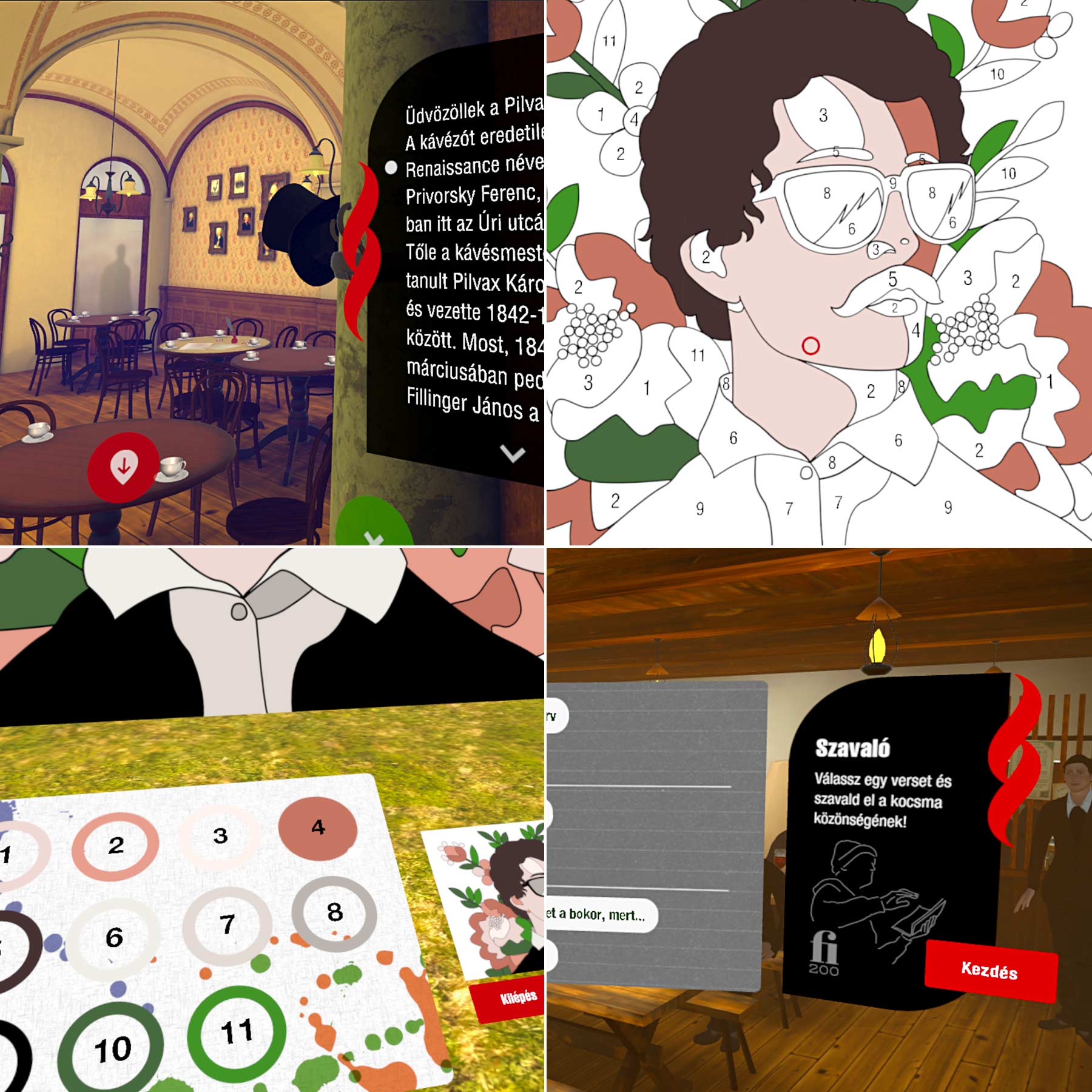
During the development process, we were in close cooperation and continuous contact with the Customer. Primarily to create an application that meets their requirements and ideas, since thousands of people will get to know this attraction package in Bács-Kiskun County at several different events and other outings (e.g. Petőfi Mesebusz).
Behind the scenes, our team included the core development team, and creative professionals as well. For each game, we were also tasked with creating the game objects and the environment. This included modelling, furnishing the game scenes and designing the sound environment for the 360-degree space. In addition to the games in the application, we also created 5 interactive 360-degree videos and an entirely hand-drawn and animated 360-degree (equirectangular) cartoon (Ludas Sanyi, Meseföld c. book).
Most of the game development happened in Unity, and the modelling was done in Blender. The game controls include head and hand tracking, without any controllers used. Initially, we suggested we leave out controllers to provide a more seamless transition between users, because this way controllers won’t get mixed up under any circumstances. We recommended this solution, based on our previous experiences, as it is also much more intuitive than using controllers which, in addition to requiring extra instructions, are more difficult to get used to. All this was made possible by the fact that we worked with the most modern hardware, namely Meta Quest 2. We recorded the live-action sequences with an Insta360 ONE RS with its unique 1” sensor, which provided great quality and dynamic range.
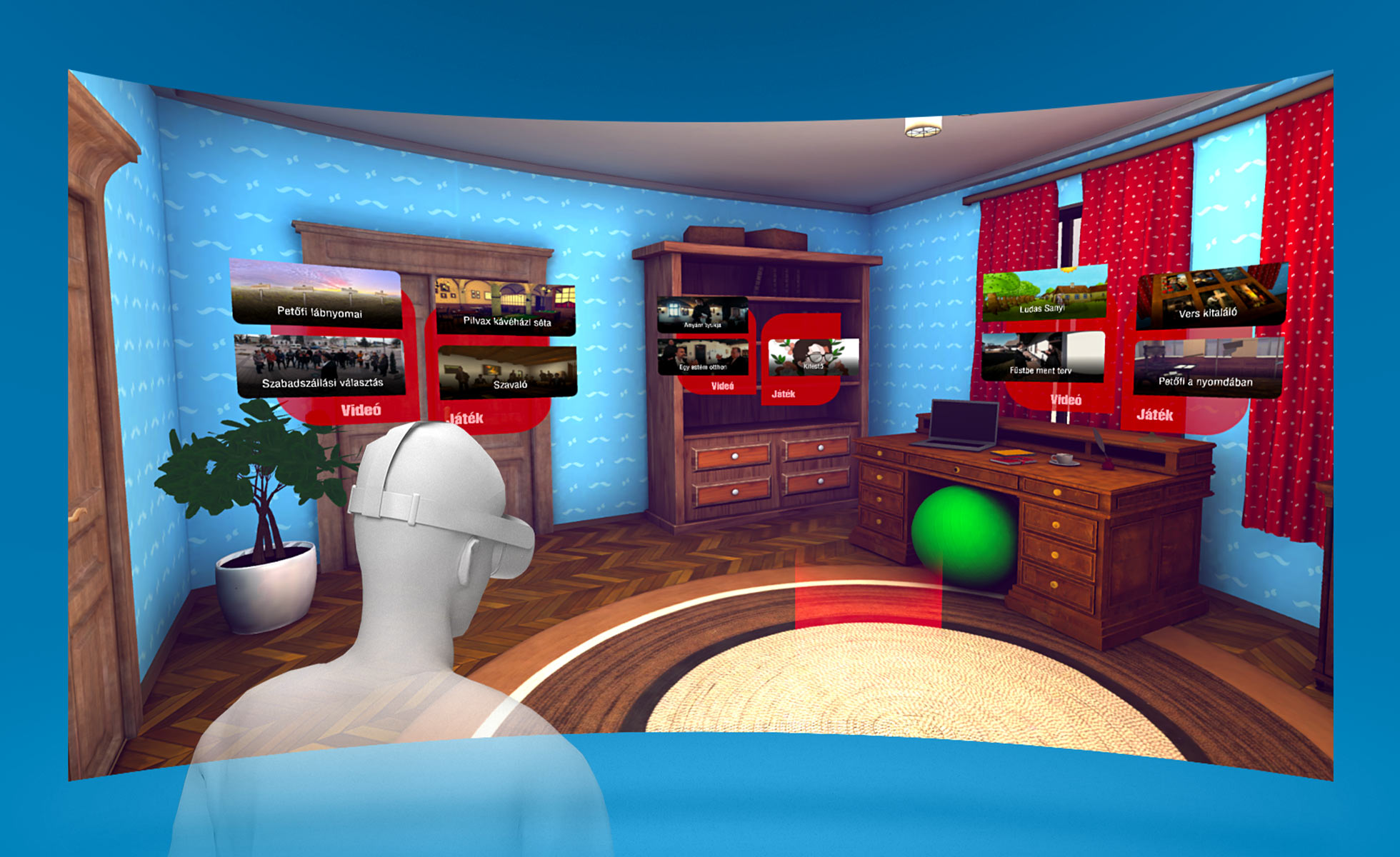
A walk in Pilvax Café
The user can take a walk in the empty, virtual version of the famous Pilvax Café. As if everyone had just left, a cigar, still alight on the table, coats hung on the backs of chairs and hangers. Cups, glasses and papers scattered around. The game has 6 teleport points, 5 interactive elements and 8 information points, which can be opened to reveal several interesting facts. The user can walk around, try the period-accurate version of Snooker and take any of the scattered items in their hands. In the background, we can even hear the muffled noise of the revolutionary crowd.
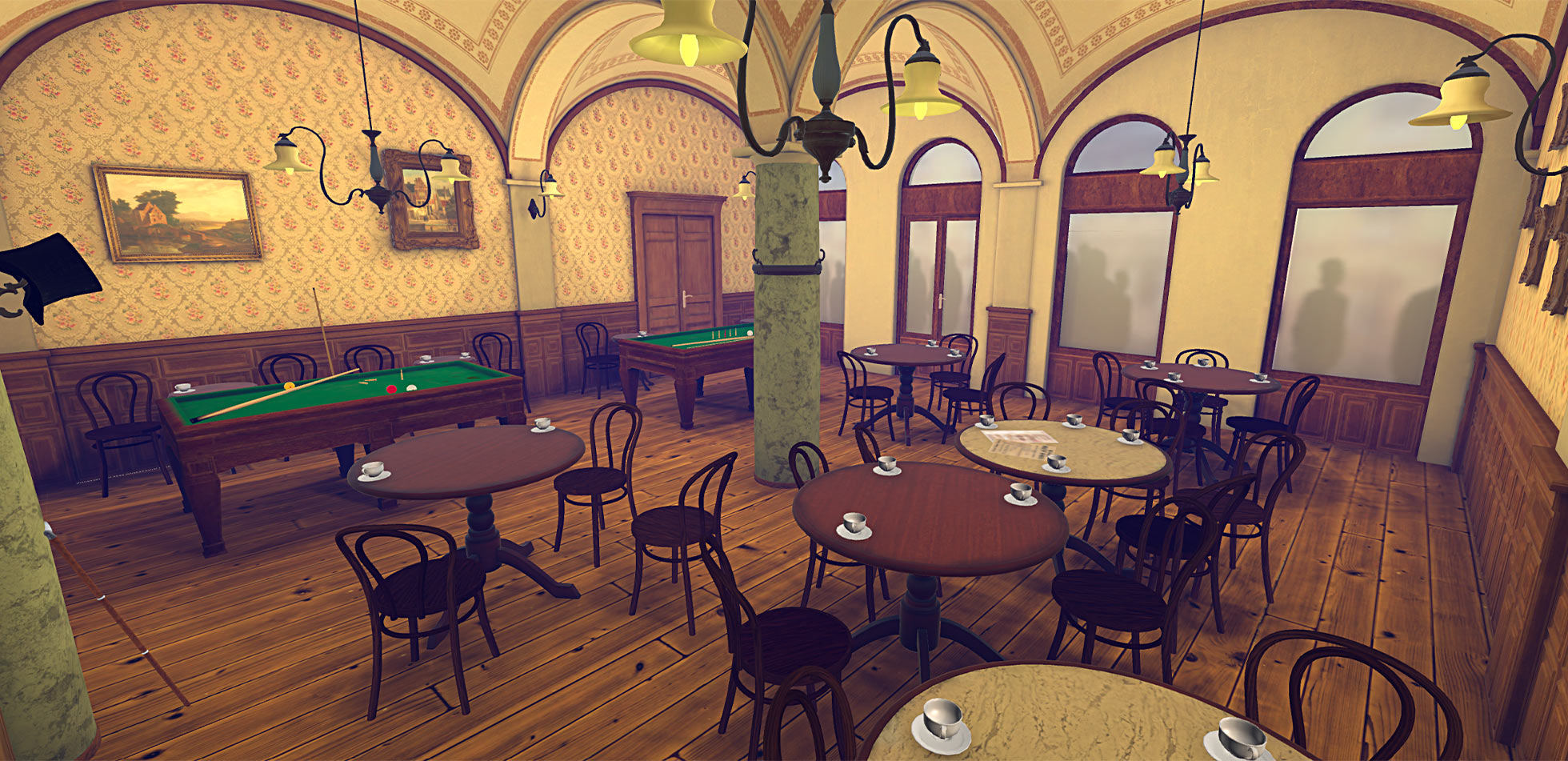
VR colour-by-the-number
We are surrounded by a curved canvas placed outdoors in the virtual space. Before we can start painting we have to choose the picture we’d like to color in. The content of the canvas is then divided into regions based on its colours, and we are only left with the outlines of our image. The regions are numbered, each number corresponding to a colour on the palette. The game contains a total of 10 images, each with a unique palette, the number of colours also determines the difficulty level. A coloured reference image is also visible while painting. For the sake of consistency, the images follow the style of the Meseföld book's illustrations.
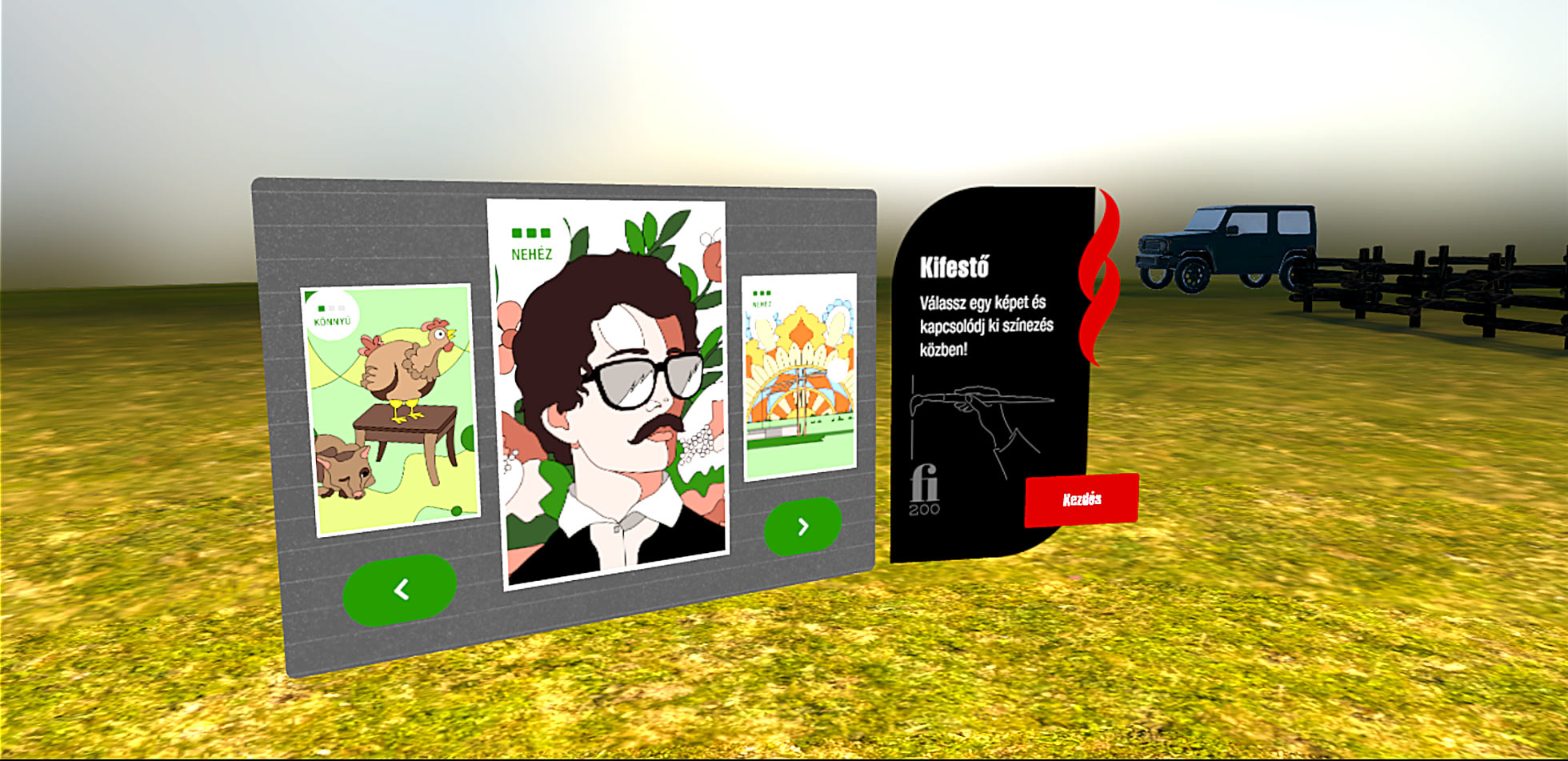
VR poem recital
The location of the game is a 3D space based on the pub in Szalkszentmárton. The player's task is to recite a poem following a certain speed and rhythm. Before starting to play, the player has to select a poem from a list of 10. The tempo and the lines of the poem are visualized in space in a manner typical of karaoke games, but taking into account the peculiarities of the VR platform. If we manage to keep the beat, we get positive feedback from the audience (e.g. applause), if we fall behind or stop reciting the poem, the audience reacts negatively (e.g. whistles, throws tomatoes at us). A jury, just like in a talent show, sits among the drinkers, including Petőfi.
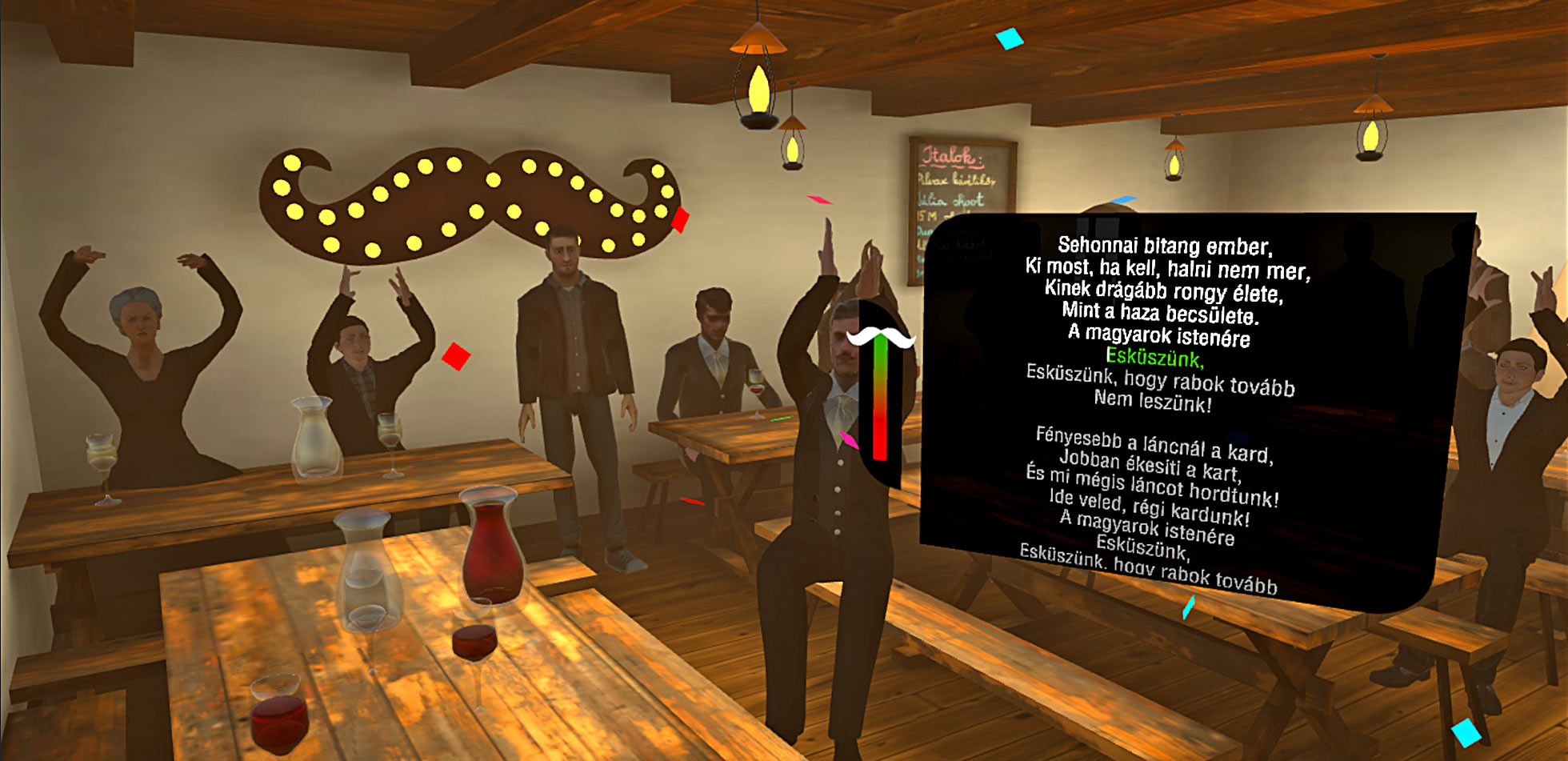
Poem guesser
In a furnished room in the virtual space, we sit in front of a table with sheets of paper and pens. The poems in this game are divided into several categories, based on the topic of the poem (e.g. friendship, love). After selecting the category and difficulty, we can start the game. In front of us are postcards with images, each of which refers to a poem. The task is to match the pictures to the poems. The player wearing the headset tries to describe the image verbally, and based on that, the group, using the printed handbook/textbook/publication, finds the poem and announces the tag with the hashtag. The game has a time limit, the faster the player finds the pairs, the more points they get.
Petőfi in the printing office
In this game, we find ourselves transported back in time, to the Landerer Printing office. Next to the printing press, the fresh copies of the ‘Nemzeti Dal’ stand in a stack, the wind blowing the top pages off the stack, sending them flying and circling in the air. In this game, our task is to catch the correctly printed copies with our hands. There are obvious, easily noticeable errors on the pages, at which point the text of the national anthem cannot yet be made out. Each page has one stanza of the poem printed on them, this means that altogether we have to catch 6 of them. After we caught all 6, we get transported over to the desk where we will now need to organize them into the right order. At this point the text on the pages becomes visible and we can read it. Here we can change the order of the pages by looking at them to select and switch them, two at a time. When all pages are in the correct order, the game stops and rewards us with points based on our speed.
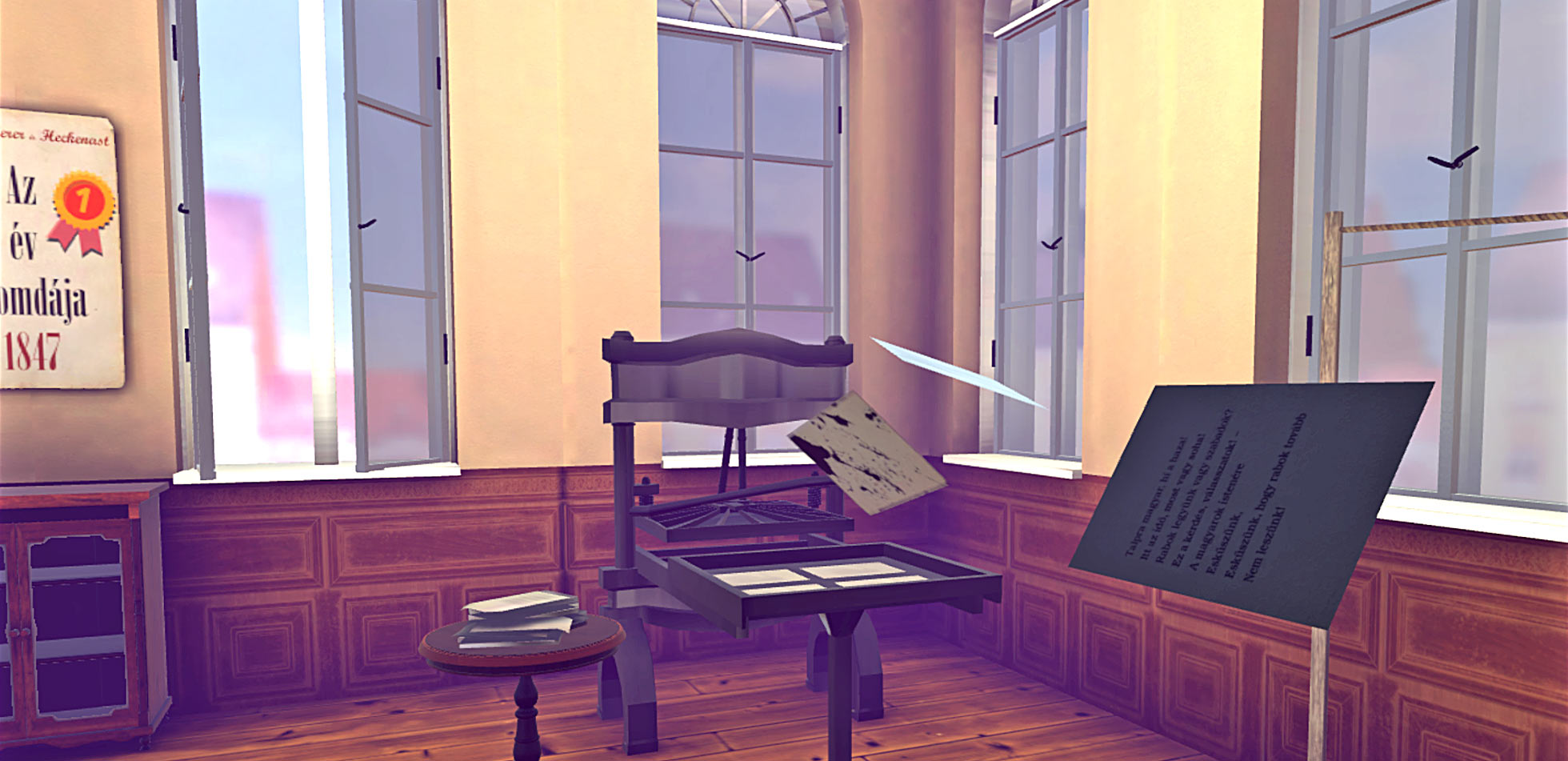
Petőfi’s footsteps: introducing locations from the poet’s life - 360 films
5 equirectangular interactive panoramic films. Each of these films presents a situation from Petőfi’s life where a poem was born. At the beginning of the films, we can choose from two options. Our choice will influence the outcome of the video. The video can either end with Petőfi reciting the poem or an alternative event. The filming locations included: Szabadszállás, Kiskőrös, Szalkszentmárton and Kiskunfélegyháza.
360 animated cartoon
The story of Sanyi Ludas from the Meseföld storybook was processed and digitized by hand, the visuals expanded into the 360 virtual space and then animated. The viewer is in the centre of the scenes and can follow Sanyi Ludas by physically turning or looking around. The story takes place in the contemporary Kiskunfélegyháza. In addition to the narration, the film contains background music and other sound effects. The screenplay for the animation was adapted from the original text of the tale provided by the Customer.
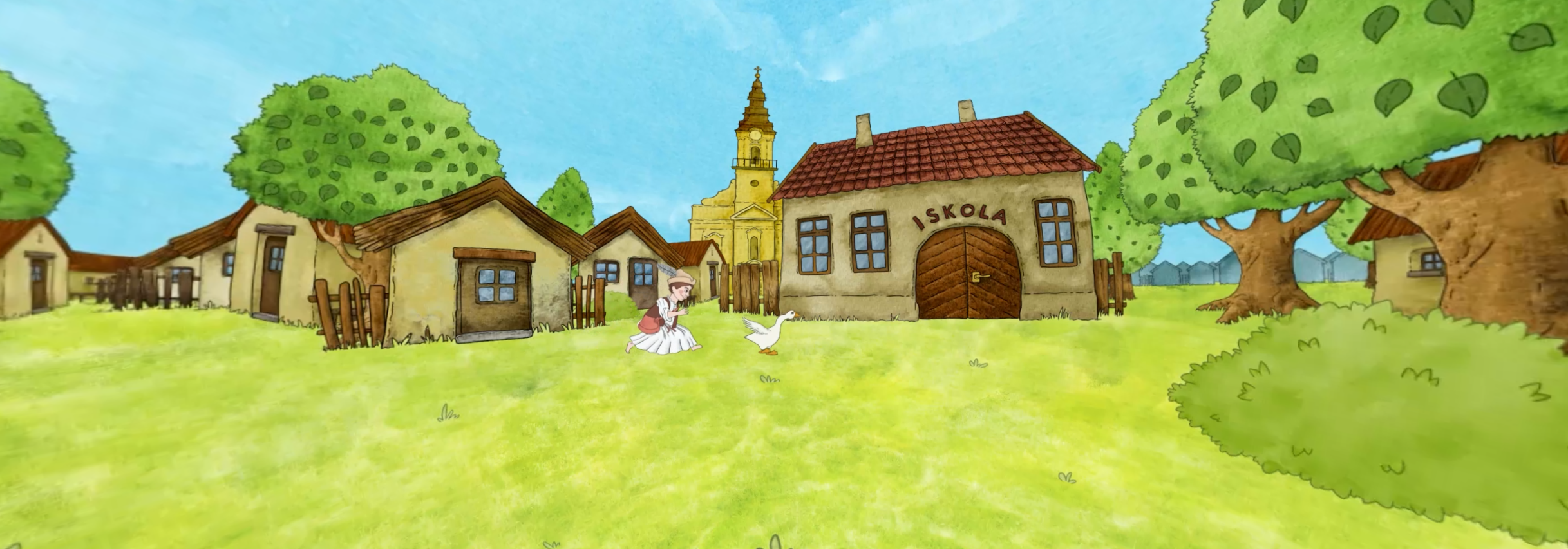
We create lasting experiences
Let's get in touch!